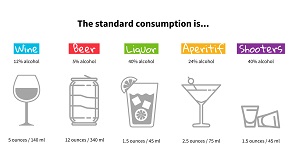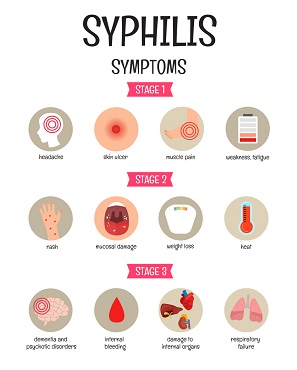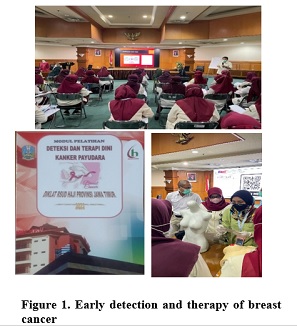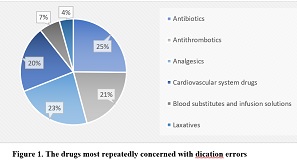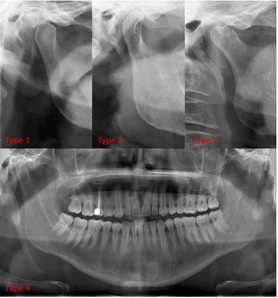Determinants of Child Marriage in Indonesia : A Systematic Review
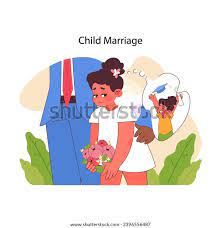
Early marriage is an ongoing phenomenon and is becoming more prevalent. The lack of public knowledge and lack of awareness of early child marriage leaves children deeply traumatized. More than 1 million (1.2 million) women aged 20-24 were married for the first time before the age of 18. The purpose of this study was to provide an overview of the causal characteristics of child marriage in Indonesia. The method used in this study was a systematic review conducted according to the Preferred Reporting Items for Systematic Reviews and Meta-Analyses (PRISMA) rules. The literature search was performed across multiple journal sites or online articles such as Google Scholar, PubMed, and Science Direct by entering the keywords 'Determinants of child marriage AND Indonesia'. There is a prevalent belief among parents and youth is that marrying off young girls preserves family honor. Additionally, poverty and economic instability make child marriage more socially acceptable. Other contributing factors include limited access to education and societal norms that promote marriage after puberty and within the same ethnic group. Despite existing laws regulating the minimum age for marriage, enforcement remains problematic. The review of nine articles indicated that child marriage in Indonesia is influenced by beliefs, limited access to education, culture, environmental factors, and gaps in legal enforcement.
INTRODUCTION
Children, according to WHO in the Convention on the Rights of the Child (CRC), are all human beings less than 18 years of age unless the applicable law in the country determines the age of adulthood earlier11. Whereas in Indonesia, the regulation of Law no. 25 of 2014 states that a child is any individual whose age has not reached 18 years, including children who are still in the womb22. Child marriage is defined as a formal or informal marriage, where one or both of the partners are under 18 years of age33.
Early marriage is an iceberg phenomenon that continues to occur and is increasingly widespread. Lack of public knowledge and understanding of perceptions of early child marriage results in children experiencing deep trauma because of the many inhibiting factors due to such marriages, such as reproductive damage, disrupted health, and internal violence in households, because children are not ready to settle down. Factors consistently associated with child marriage in South Asia, including rural location, low levels of education, poor economic background, mass media, and religion (Hinduism and Islam in some countries), are less exposed. Maternal health factors resulting from child marriage include low availability of antenatal care services, low institutional births, and low delivery support by qualified obstetricians44.
In the revision of the 1974 Marriage Law no. 1, it is stated that the requirement for a man and a woman to be able to enter into a marriage is that they are both 19 years old. The difficulty of preventing early marriage or the rise of early marriage is due to the presence of permissible dispensations, such as children aged 16 years may marry as long as they have permission from their parents and local court. In addition, many early marriages are carried out in secret by way of unregistered marriage or are already pregnant before marriage55.
More than 1 million (1.2 million) women aged 20-24 were married for the first time before the age of 18. Meanwhile, there were 61.3 thousand women who held their first marriage before they were 15 years old66. In Indonesia, the province with the highest prevalence is West Nusa Tenggara, with 16.23 percent77.
The impact of early marriage can be observed in various dimensions of life, so it is necessary to know the causative factors. This needs to be done to prevent an increase in the incidence of early marriage88. Sociocultural factors influence the misconduct that leads to child marriage, especially among girls. The factors contributing to child marriage include the lack of role of community leaders (village officials), lack of role of health workers, age, education, knowledge, household finances, parenting, and promiscuity9,10910. Religious beliefs also contribute as a factor. For example, in a study by Rofika and Hariastuti (2020), when a woman is in a trance, she has to be married to stop the trance99.
Until now, child marriage has been an important problem in Indonesia. The factors causing early marriage are different in each community area. This is influenced by geography, economy, society, culture, and religion. The negative impact of marriage and giving birth at a young age is the risk of premature birth, low birth weight (LBW), and even maternal death caused by the unpreparedness of women in conceiving and giving birth. Child marriage also has an impact on the low quality of the family, both in terms of psychological unpreparedness in dealing with social and economic problems in the household, and the risk of being mentally unprepared which results in severe depression1111.
Therefore, research on child marriage in Indonesia is important to do as the child marriage rate in Indonesia remains high (10.82%)1212. The purpose of this study was to provide an overview of the causal characteristics of child marriage in Indonesia, to determine the influencing variables, and to analyze the tendency towards child marriage in Indonesia.
MATERIALS AND METHODS
The method used in this research was a systematic review, which was conducted following the Preferred Reporting Items for Systematic Reviews and Meta-Analyses (PRISMA) rules and following the author's topic regarding Determinants of Child Marriage in Indonesia. A literature search was carried out through several journal sites or online articles, such as Google Scholar, PubMed, and Science Direct, by entering the keywords "Determinants of child marriage AND Indonesia". Of the 45.522 articles found based on these keywords, the authors filtered them based on full-text criteria, articles in the 2021-2023 year range, and articles in Indonesian and English. The authors decided to use only articles from the last 2 years because the authors wanted to focus on discussing the implementation results of the 2019 revision of the Marriage Law. The next stage was the screening of the articles based on predefined inclusion and exclusion criteria, as shown in Figure 1.
Figure 1.PRISMA Flow Diagram
RESULTS
No | Authors | Title | Study Design | Sample | Main Findings |
1 | Heribertus Rinto Wibowoa, Muliani Ratnaningsih, Nicholas J Goodwina, Derry Fahrizal Ulumb, Emilie Minnick (2021)1212 | One household, two worlds: Differences of perception towards child marriage among adolescent children and adults in Indonesia | A cross-sectional study using a quantitative survey. | Participants consisted of two groups; Parents or caregivers in households with children ages 13-15 and youth |
World Health Organization. Report of The Consultation on Child Abuse Prevention WHO, Geneva, 29-31 March 1999. Geneva, 1999. https://iris.who.int/handle/10665/65900
Permenkes RI. Peraturan Menteri Kesehatan Nomor 25 Tahun 2014 tentang Upaya Kesehatan Anak [Regulation of the Minister of Health of the Republic of Indonesia No. 25 of 2014 on Child Health Efforts]. Database Peraturan BPK 2014; 3. https://peraturan.bpk.go.id/details/117562/permenkes-no-25-tahun-2014
Ministry of Foreign Affairs. Ministry of Gender, Children and Social Protection, www.letgirlslead.org (2011). https://www.unicef.org/ghana/media/1671/file/Fact%20Sheet%20-%20Child%20Marriage.pdf
Subramanee SD, Agho K, Lakshmi J, et al. Child Marriage in South Asia: A Systematic Review. Int J Environ Res Public Health; 19. Epub ahead of print 2022. DOI: 10.3390/ijerph192215138.
Mubasyaroh. Analisis Faktor Penyebab Pernikahan Dini dan Dampaknya Bagi Pelaku [Analysis of the Factors Causing Early Marriage and Its Impact on Participants]. J Yudisia; 7. https://download.garuda.kemdikbud.go.id/article.php?article=1800038&val=6790&title=ANALISIS%20FAKTOR%20PENYEBAB%20PERNIKAHAN%20DINI%20DAN%20DAMPAKNYA%20BAGI%20PELAKUNYA
Central Statistics Agency Indonesia. Pencegahan Perkawinan Anak Percepatan yang Tidak Bisa Ditunda [. Prevention of Child Marriage: An Acceleration That Cannot Be Postponed.]. Badan Pus Stat 2020; 6–10. https://www.unicef.org/indonesia/media/2851/file/child-marriage-report-2020.pdf
Central Statistics Agency Indonesia. (2024). Proporsi Perempuan Umur 20-24 Tahun Yang Berstatus Kawin Atau Berstatus Hidup Bersama Sebelum Umur 18 Tahun Menurut Provinsi [Proportion of Women Aged 20-24 Years Who Are Married or Living Together Before Age 18 by Province], 2021-2023 [Online]. Tersedia di: https://www.bps.go.id/id/statistics-table/2/MTM2MCMy/proporsi-perempuan-umur-20-24-tahun-yang-berstatus-kawin-atau-berstatus-hidup-bersama-sebelum-umur-18-tahun-menurut-provinsi.html (Diakses pada 12 Januari 2023).
Hermambang A, Ummah C, Gratia ES, et al. Faktor-faktor yang memengaruhi pernikahan usia dini di Indonesia [Factors Influencing Early Marriage in Indonesia]. J Kependud Indones; 16. https://d1wqtxts1xzle7.cloudfront.net/82381407/pdf-libre.pdf?1647762961=&response-content-disposition=inline%3B+filename%3DFaktor_Faktor_yang_memengaruhi_pernikaha.pdf&Expires=1730088037&Signature=JGh07b3BZn~jVnFu5KjdQfxW9g8WpUhoD9gAZhG4Ek6zkgl1ec2WXmvckdqBZfNctpDKbxcOmMtuO0Wk0SvIIm0OOhUyv4SYKhCj~pwv8Y~bz1EcBBbkafbIvoJ3WaQjXgpleCJNLhoqZB6-kfRk8hQXRSoKRwZ5PChiyFcXiEj3AbzIF7UDiK1TpbSw7R7-FYUFeVTZOExYocmfQO8cxrnmbtA-Oe470F3hmEsRvViGmmTQX2NzyiBBacfz8mHPuH7qductcLBWqdjDlDJZSEZGLlHLl7h17tq8J4WEomgOLCzsag6NUlV5TC6IVg3hnMY6CUPVdI1ATo8cycEC0Q__&Key-Pair-Id=APKAJLOHF5GGSLRBV4ZA
Rofika AM, Hariastuti I. Social-Cultural Factors Affecting Child Marriage in Sumenep. J PROMKES 2020; 8: 12. DOI: 10.20473/jpk.v8.i1.2020.12-20.
Millatussa’adiyyah A, Susilawati S. Upaya Menurunkan Tingkat Perkawinan Dibawah Umur Terhadap Hak Pendidikan Formal Anak [Efforts to Reduce the Rate of Underage Marriage and Its Impact on Children's Right to Formal Education]. Ajudikasi J Ilmu Huk 2019; 3: 107. DOI: 10.30656/ajudikasi.v3i2.1836.
Adam A. Dinamika Pernikahan Dini [Dynamics of Early Marriage]. Al-Wardah 2020; 13: 14. https://www.researchgate.net/profile/Adiyana-Adam/publication/342175278_DINAMIKA_PERNIKAHAN_DINI/links/6001876392851c13fe10e726/DINAMIKA-PERNIKAHAN-DINI.pdf
Wibowo HR, Ratnaningsih M, Goodwin NJ, et al. One household, two worlds: Differences of perception towards child marriage among adolescent children and adults in Indonesia. Lancet Reg Heal - West Pacific 2021; 8: 100103. DOI: 10.1016/j.lanwpc.2021.100103.
Ratnaningsih M, Wibowo HR, Goodwin NJ, et al. Child Marriage Acceptability Index (CMAI) as an essential indicator: an investigation in South and Central Sulawesi, Indonesia. Glob Heal Res Policy; 7. Epub ahead of print 2022. DOI: 10.1186/s41256-022-00252-4.
Rahiem MDH. COVID-19 and the surge of child marriages: A phenomenon in Nusa Tenggara Barat, Indonesia. Child Abus Negl 2021; 118: 105168. DOI: 10.1016/j.chiabu.2021.105168.
Cameron L, Contreras Suarez D, Wieczkiewicz S. Child marriage: using the Indonesian family life survey to examine the lives of women and men who married at an early age. Springer US, 2023. Epub ahead of print 2023. DOI: 10.1007/s11150-022-09616-8.
Puspitasari N. Determinants and Impact of Child Marriage on the Bride in Indonesia. Indian J Forensic Med Toxicol 2021; 15: 3792–3797. DOI: 10.37506/ijfmt.v15i3.15886.
Aliyas, Rais S, Ilyas ASK, et al. Optimizing The Role of Religious Jurisdiction in Preventing Child Marriage in Gorontalo Province ARTICLE HISTORY ABSTRACT. Huk Volkgeist 2022; 7: 46–52. https://jurnal-umbuton.ac.id/index.php/Volkgeist/article/view/2866
Suadi A, Candra M. Prevention of Child Marriage in Indonesia Based on System Interconnection. J Southwest Jiaotong Univ 2022; 57: 926–937. DOI : 10.35741/issn.0258-2724.57.6.79
Wahyuni NI, Moedjiono AI, Tamar M. Determinant Factors Affecting Intention of Child Marriage to Adolescents in Banggai Laut. J Asian Multicult Res Med Heal Sci Study 2021; 2: 16–26. DOI: 10.47616/jamrmhss.v2i1.81
Hasmi dan Zulfihani 2022. Faktor penyebab dan dampak psikologis pernikahan anak (studi kasus UPTD PPA LOMBOK TIMOR) [Causes and Psychological Effects of Child Marriage: A Case Study of UPTD PPA Lombok Timor]. Taujih 2022; 1: 10–19. DOI : 10.37216/taujih.v1i1.753
Mauludi S. Pendidikan Agama sebagai prevensi pernikahan dini: analisis terhadap pemahaman dan praktik agama dalam mengatasi fenomena pernikahan dini di Pekanbaru [Religious Education as a Prevention of Early Marriage: An Analysis of Understanding and Religious Practices in Addressing the Phenomenon of Early Marriage in Pekanbaru]. Tak J Pendidikan, Sains, dan Hum 2023; 2: 13–22. DOI: 10.56113/takuana.v2i1.69.
Dewi AP, Hartati ND, Alfiana S, et al. Analisis Mendalam Faktor-Faktor Penyebab Pernikahan Dini di Indonesia: Implikasi untuk Kebijakan Sosial dan Pendidikan [Analysis of Factors Contributing to Early Marriage in Indonesia: Implications for Social and Educational Policy]. Reli J Kaji Agama dan Multikulturalisme Indones 2024; 3: 39–47. https://www.jurnal.anfa.co.id/index.php/relinesia/article/view/1695
Indonesia R. Undang undang No. 11 Tahun 1974 Tentang Pengairan. 2012; 1–5. https://peraturan.bpk.go.id/Download/36382/UU%20Nomor%201%20Tahun%201974.pdf
Sekretariat Negara Republik Indonesia. Undang-undang Republik Indonesia No 16 Tahun 2019 Tentang Perubahan Undang-Undang Nomor 1 Tahun 1974 Tentang Perkawinan [Secretariat of the Republic of Indonesia. Law of the Republic of Indonesia No. 16 of 2019 on the Amendment of Law No. 1 of 1974 on Marriage]. Undang Republik Indones 2019; 2–6. https://peraturan.bpk.go.id/Download/113523/UU%20Nomor%2016%20Tahun%202019.pdf
Aditya RI, Waddington L. The Legal Protection Againt Child Marriage in Indonesia. Bestuur. 2021; 9: 126–134. DOI: 10.20961/bestuur.v9i2.55144.
Sari, Novita, Suyitno, Imam M. Perkawinan Dini Di Lingkungan Sewo Kecamatan Lalabata Kabupaten Soppeng [Early Marriage in the Sewo Area, Lalabata District, Soppeng Regency]. Tomalebbi 2022; 9: 40–45. https://ojs.unm.ac.id/tomalebbi/article/view/32700
Copyright (c) 2024 Zulfa Zuhriyyah Ayudiputri, Anisa Afianti Nur, Siska Amanda, Fahma Fadila Hanifa

This work is licensed under a Creative Commons Attribution-ShareAlike 4.0 International License.
- The journal allows the author to hold the copyright of the article without restrictions.
- The journal allows the author(s) to retain publishing rights without restrictions.
- The legal formal aspect of journal publication accessibility refers to Creative Commons Attribution Share-Alike (CC BY-SA).
- The Creative Commons Attribution Share-Alike (CC BY-SA) license allows re-distribution and re-use of a licensed work on the conditions that the creator is appropriately credited and that any derivative work is made available under "the same, similar or a compatible license”. Other than the conditions mentioned above, the editorial board is not responsible for copyright violation.























